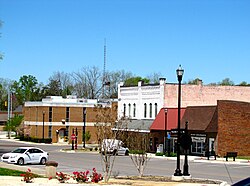Coffee County | |
|---|---|
 Coffee County Courthouse in Manchester | |
 Location within the U.S. state of Tennessee | |
 Tennessee's location within the U.S. | |
| Coordinates: 35°29′N86°04′W / 35.49°N 86.07°W | |
| Country | |
| State | |
| Founded | January 8, 1836 |
| Named after | John Coffee |
| Seat | Manchester |
| Largest city | Tullahoma |
| Area | |
• Total | 435 sq mi (1,130 km2) |
| • Land | 429 sq mi (1,110 km2) |
| • Water | 5.6 sq mi (15 km2) 1.3% |
| Population (2020) | |
• Total | 57,889 |
| • Density | 123/sq mi (47/km2) |
| Time zone | UTC−6 (Central) |
| • Summer (DST) | UTC−5 (CDT) |
| Congressional district | 4th |
| Website | www |
Coffee County is a county located in the central part of the state of Tennessee, in the United States. As of the 2020 census, the county's population was 57,889. [1] Its county seat is Manchester. [2] Coffee County is part of the Tullahoma-Manchester, TN Micropolitan Statistical Area. It is also part of Middle Tennessee, one of the three Grand Divisions of the state.







